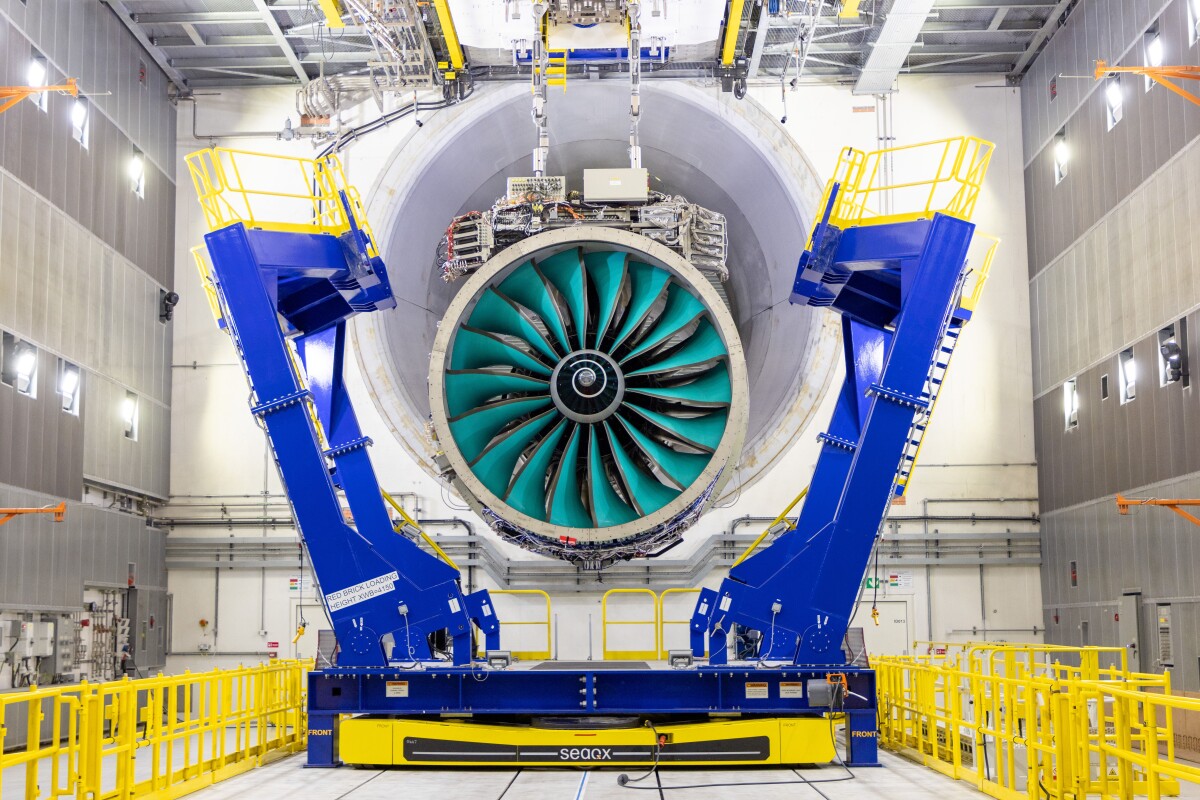 |
Sooner or later we will have actual gravity ships which will not have to use aerodynamic lift. However, we will still want jet engines to push us around the atmosphere in those football sized arks. Before all that it turns out that bigger means more fuel efficient.
So yesr we will see somewhat larger long haul craft, but that easily doubles capacity ove our best today.
I have also thought about wormhole tech and do think that the need for short hop vector changes may make long haul impractical and this keeps large ships aloft simply because they do long haul really well. Understand as well, hydrogen airships are practical today if operated as drones.
So yes those big engines are around for a long time.
World's largest aircraft engine is fully operational and ready to test
By Loz Blain
December 22, 2022
https://newatlas.com/aircraft/rolls-royce-ultrafan-test/?
Hi, I'm your biggest fan ... The Rolls-Royce UltraFan is the biggest turbofan in history, and it's expected to
By Loz Blain
December 22, 2022
Hi, I'm your biggest fan ... The Rolls-Royce UltraFan is the biggest turbofan in history, and it's expected to deliver huge advantages in fuel economy, weight, noise and emissions
Rolls-Royce
Rolls-Royce says it's finished building the first demonstrator for its massive UltraFan engine, which will eventually hit the skies in airliners to be developed in the 2030s. Testing begins soon, with expectations of a 25% leap in efficiency.
Airliners will continue to burn hydrocarbon fuels into the foreseeable future – there's no clean alternative yet that can give you anywhere near the range and endurance of current long-haulers. So Rolls-Royce is continuing to develop its next-generation UltraFan engine.
This giant blue-bladed turbofan is the first of what will become a whole family of engines for narrow- and wide-body aircraft, ranging from 25,000 lbf to around 110,000 lbf of thrust. Its 140-inch-diameter (3.56 m) fan is nearly 5% bigger than the one in the General Electric GE9X – currently the biggest engine in the airliner class. With a small increase in diameter, though, comes a pretty decent increase in swept area.
The lightweight, large-diameter fan, high-bypass design, power gearbox and high-speed compressor all add up to significant fuel savings
Rolls-Royce
The UltraFan makes use of Rolls-Royce's new robot-controlled 3D composite manufacturing process, which is now capable of producing the complex shapes needed for the aerodynamics of fan blades. Titanium is still the engineers' pick for the leading edges of the blades, but the rest is carbon composite. This makes it much lighter than the full-titanium fans used in Rolls-Royce's Trent-class engines. This lightweight fan is the key reason why Rolls-Royce has been able to build an engine this big – but on smaller versions, it'll basically free up weight for extra payload and passengers.
The UltraFan also runs a planetary power gearbox between the fan and the compressors at the back, so the fan can run at its optimal slower speed while the compressors run at their optimal higher speed. In earlier testing, the gearbox handled some 65 megawatts (87,000 hp) of power, another aerospace record.
While the fan has an enormous diameter, the turbines within are kept fairly compact, and Rolls-Royce's engineers have made sure a large volume of air goes around the compressor core and straight out the back of the engine, as opposed to being channeled through the core of the engine to drive the compressors. This creates a high bypass ratio, which helps cut down noise by an impressive 35%, and gives the engine a significant boost in fuel efficiency.
Moving the UltraFan test demonstrator into the Testbed 80 facility
Rolls-Royce
Rolls-Royce says the UltraFan will use about a quarter less fuel than its own first-generation Trent engines, making them cheaper to run, longer-range and better for the environment. They capture NOx emissions more efficiently, too, dropping these by around 40% and more or less eliminating particulate emissions altogether. It's designed to run on 100% sustainable aviation fuel to begin with, but Rolls-Royce is also looking into hybrid electrification and hydrogen combustion in the drive toward full decarbonization.
Now that the first tech demonstrator is fully assembled, it's gone to the company's brand new, US$108 million Testbed 80 facility in Derby, UK – the "largest and smartest" test facility in the world, designed and built specifically around the needs of the UltraFan test program, where the team will start putting it through its paces as development continues.
Rolls-Royce | UltraFan Test Programmes
Source: Rolls-Royce
No comments:
Post a Comment